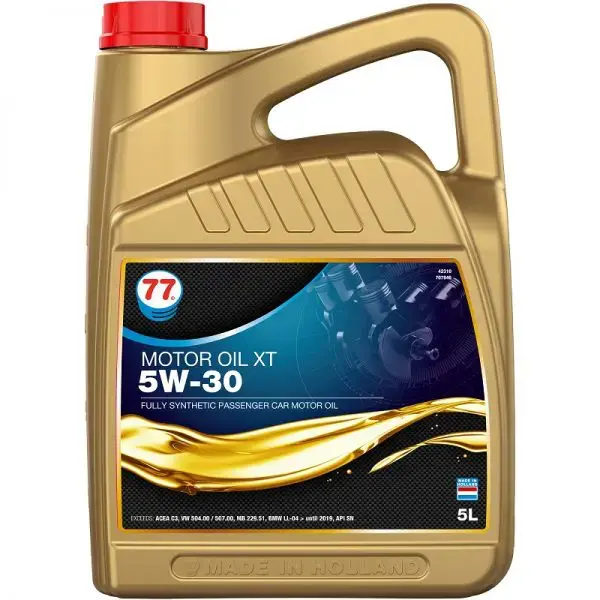The Unseen Impact: How Lubricants and Oils Can Transform Your Vehicle's Performance
- Autolast Ghana

- May 14
- 5 min read
When you think about vehicle performance, the importance of lubricants and oils often slips your mind. However, the right motor oil can dramatically improve how your car operates, extend its life, and enhance its efficiency. By grasping the key features of lubricants, including the advantages of synthetic oils, you can make smarter choices for your vehicle. In this post, we will explore how to choose the right motor oil, the benefits of synthetic oils, and the steps to check and change your oil.
Choosing the Right Motor Oil for Your Car

Choosing the right motor oil is crucial for maintaining your vehicle's optimum performance. Motor oils are rated by their viscosity, which refers to how easily the oil flows at varied temperatures. This rating is indicated by the Society of Automotive Engineers (SAE) number, such as 5W-30.
Here are essential factors to consider when selecting motor oil:
Manufacturer Recommendations: Start with your vehicle's owner manual. It will usually specify a particular oil grade that meets your engine's requirements. For example, most modern engines require low-viscosity oils such as 0W-20 or 5W-30 to ensure peak performance.
Climate Conditions: The viscosity of the oil should match the typical temperature range in your area. For example, if you live in a region where winter temperatures frequently drop below freezing, a lower viscosity oil like 0W-20 can provide better engine starts. Conversely, areas with high heat might demand a higher viscosity, such as 10W-40.
Driving Conditions: Reflect on your driving habits. Frequent short trips, heavy towing, or high-speed driving can accelerate engine wear. In these cases, investing in high-quality synthetic oil can provide superior protection and reduce wear. A synthetic oil, for instance, might last 50% longer than conventional oil under similar driving conditions.
Oil Type: Motor oils come in three main types: conventional, synthetic, and synthetic blend. Conventional oil is the least expensive option, usually costing around $25 for a 5-quart jug. In contrast, synthetic oil generally costs about $50 for the same volume but offers better protection, especially in extreme conditions.
Additives: Various additives in motor oil enhance performance. Some oils include detergents to clean engine components, while others contain agents that reduce wear. These additives are vital, with certain oils claiming up to 40% better protection against engine wear over time.
By evaluating these factors, you can select the right motor oil tailored to your vehicle, ensuring its optimal performance and longevity.
Benefits of Synthetic Oils for Vehicle Performance
Synthetic oils are gaining traction among car enthusiasts and everyday drivers alike because they provide multiple benefits that enhance your vehicle's performance.
1. Superior Engine Protection
Synthetic oils are refined to a higher purity level than conventional oils. This results in fewer impurities, leading to less sludge and deposit buildup. For example, synthetic oils can reduce engine wear by up to 50%, resulting in a longer lifespan for critical components.
2. Greater Resistance to Heat and Oxidation
Synthetic oils boast better thermal stability, allowing them to perform at higher temperatures without breaking down. Many synthetic oils can effectively operate in environments exceeding 100 degrees Celsius. Their resistance to oxidation helps maintain performance level for longer periods, often lasting up to 15,000 miles between changes compared to 3,000 to 5,000 miles for conventional oils.
3. Enhanced Fuel Efficiency
Switching to synthetic oil can improve fuel economy by reducing friction within the engine. Drivers may see an increase of about 1-2% in fuel efficiency. For an average driver, this translates to savings of $50-$100 annually, depending on fuel prices and driving habits.
4. Extended Oil Change Intervals
Synthetic oils tend to last longer than their conventional counterparts, meaning fewer oil changes. Many manufacturers now recommend changing synthetic oil every 7,500 to 10,000 miles instead of the standard 3,000 to 5,000 miles for conventional oils. This not only saves money but also reduces environmental waste.
5. Performance in Extreme Conditions
Whether in icy conditions or extreme heat, synthetic oils maintain excellent performance. They allow reliable cold starts in temperatures below freezing and can withstand high heat environments without the risk of breakdown. For those who frequently drive in challenging conditions, synthetic oils are a smart choice.
By understanding the unique advantages of synthetic oils, you can make informed decisions that significantly enhance your vehicle’s performance and longevity.
How to Check and Change Your Car's Oil
Keeping the oil levels in your vehicle adequate is essential for its health. Checking and changing oil is simple and can be done by most vehicle owners. Here’s a straightforward guide.
Checking Your Oil Level
Gather Materials: Make sure you have a clean rag and a funnel to help with pouring new oil.
Park Safely: Position your vehicle on a flat surface and ensure the engine is cool.
Locate the Dipstick: Open the hood and find the oil dipstick, usually marked with a brightly colored handle.
Remove the Dipstick: Pull the dipstick out and wipe it clean to remove any oil.
Reinsert and Remove: Insert the dipstick back into its tube, then pull it out again to check the oil level against the markings.
Assess Oil Quality: Fresh oil is bright amber and smooth. If the oil is dark or has a gritty texture, it might need changing.
Changing Your Oil
Gather Supplies: You will need new oil, a new oil filter, a wrench, an oil catch pan, and a funnel.
Prepare Vehicle: Lift your vehicle securely to access the oil pan.
Remove the Oil Drain Plug: Position the oil catch pan underneath and use your wrench to loosen and remove the drain plug. Allow the oil to drain completely.
Replace Oil Filter: Remove the old oil filter using a wrench. Apply a small amount of new oil to the rubber gasket on the new oil filter before installing it.
Reinstall the Drain Plug: Once drained, replace the drain plug securely.
Add New Oil: Pour the new oil into the engine using a funnel, consulting your owner's manual for the required capacity.
Check Oil Level Again: After adding the oil, wait a minute and use the dipstick to confirm the oil level is correct.
Dispose of Old Oil Properly: It’s important not to pour old oil down the drain. Take it to a recycling center or a local auto parts store that accepts used oil.
Regularly checking and changing your oil helps extend the life of your engine and significantly improve your vehicle's performance.
Empower Your Vehicle for Better Performance
Lubricants and oils are essential for boosting and maintaining your vehicle's performance. By choosing the right motor oil and taking advantage of synthetic oils, you ensure that your engine operates smoothly and efficiently. Regular oil checks and changes may seem tedious, but they are key to effective vehicle maintenance that will benefit you in the long run.
Understanding the impact of lubricants and oils empowers you to make decisions that enhance your vehicle's performance and lifespan. Whether you're a seasoned car owner or new to the driving world, this knowledge can significantly improve your overall automotive experience.
Your vehicle is an investment, and using the right lubricants and oils is a straightforward way to enhance your driving experience and have peace of mind while on the road.




Comments